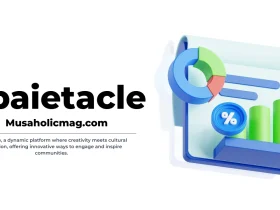Bill Gates famously said back in 1974:
“Banking is necessary, banks are not”.
And when you think today about digital payment, banks rarely make it to the top of the list of financial services. A fintech app development service is about:
- Contactless payment fueled by the rise of NFC technology;
- Cryptocurrency thriving due to blockchain;
- Fraud prevention and anti-cyber attacks software enhanced by AI;
- Instant payments enabled by FPS (Faster Payment System) and the general rise of technology such as banking APIs, faster internet, cloud infrastructure, etc;
- BNPL (Buy now pay later) that seems like a financial product but it would not have existed without automation, AI ability to check customer’s creditworthiness, a variety of APIs, digital identity verification, and cloud infrastructure;
- Embedded finance that supports any thriving digital marketplace.
Fintech app development ensures that any digital or offline business can benefit from digital payments supported by the latest technological developments.
What Are Fintech App Development Services?
In terms of definition, fintech app development services are a range of development services aimed at creating an application or digital platform that operates with financial transactions or supporting services ranging from fraud prevention to robo advisors and other monetary activities. In plain terms, fintech app development creates apps of the following kind:
- Budgeting apps as in personal finance;
- Stock market trackers for investing;
- Invoicing and accounting for B2B finance;
- Mobile banking;
- Cryptocurrency wallets.
Security, in most cases, is a vital part of the development of any professional fintech app development company. Fintech apps require stringent encryption practices, biometric authentication, and anti-cyber attack measures.
Benefits of Fintech Apps for Organizations
The key benefits are described in the table below. However, it is essential to recognize the cumulative benefit of fintech apps. Some fintech-enabled products created new customer segments. Examples are Buy Now Pay Later, microlending, and embedded finance. However, simply having faster and cheaper transactions has led to an increase in global trade, enlargement of existing customer segments through neobanking, enhancing financial inclusivity, and easing cross-border transactions.
Table – Benefits of fintech apps for organizations
| Benefit | Description | Why should an organization use it? |
| Decreases transaction costs | With real-time payment systems like Venmo or Zelle, there is often less processing through traditional banks and payments go through directly which reduces the fees. Cryptocurrency wallets also don’t rely on traditional financial institutions, but their fees would depend on peak times within the blockchain network. PayPal or Apple Pay as examples of digital wallets also enable direct money transfer reducing the transaction fees compared to traditional methods | Fintech mobile app development allows businesses to save money on payment processing fees and avoid using traditional costly methods like SWIFT. |
| Minimal transaction time | Different apps now support real-time transactions (RTP). They are apps that rely on NFC, merchant payment platforms like Stripe, p2p payment apps like Venmo, and banking with RTP like Revolut. Payoneer utilizes blockchain and various other technologies to replace SWIFT payment and process transactions faster. | Fast payments benefit everyone: businesses do not have cash flow gaps so they do not delay payroll or paying to suppliers. Also, this increases business liquidity. Suppliers on marketplaces get to reinvest money faster and fulfill more orders. Thanks to fintech mobile app development services, gig workers get access to earnings faster and increase their purchasing power. |
| Security and preventing fraud | Security is built with multiple technologies in fintech apps. The big part belongs to AI and machine learning in detecting fraud and monitoring transaction patterns. In addition, AI helps to improve authentication with biometrics such as face recognition, fingerprints, and authentication with voice. | For instance, PayPal’s AI fraud detection oversees over $700 billion of transactions per year and the fraud rate is at 0.32%. Overall, this is higher than global card fraud rates between 0.15% to 0.20%. However, if you analyze the US data, fintech payments have the lowest fraud levels compared to traditional methods like checks and corporate cards (figure below). |
Figure – Fraud as experienced by US organizations
Challenges and Solutions in Fintech App Development
In the figure below, you can see that traditional payments in the US are higher in fraud than fintech methods. This issue indicates that even with improved security measures, adoption and trust are still vital challenges to fintech app development. The major ways of overcoming it are transparency and customer support.
Another issue derived from the dynamics just for 1 year. Cryptocurrency fraud grew from 1% to 5% in 1 year. The more popular a payment method gets, the more users and criminals try to cheat the system. Certainly, the security measures are trying to keep up and foresee potential threats. Generally, any fintech app development service prioritizes security considerations. The latest solutions include end-to-end encryption, 2-factor authentication including biometrics, and AI/ML fraud detection.
In addition, increasing regulatory standards across the board of all digital apps significantly improve security. This is because, unfortunately, people use the same credentials from app to app. So passwords, emails, and phone numbers stored in a non-finance app will open doors for hackers on a finance app. For instance, the infamous 2012 LinkedIn hack led to 6.5 million stolen accounts, and data was scraped for 100 million more. Raising security standards overall leads to more secure fintech apps.






Leave a Reply